Orchid Care Tips Part 1 - Understanding The Colors Of The Orchid Roots
Understanding the colors of the orchid roots, tells us about the condition of the orchid needs for watering. This is the main factor which can help us understand if they need need to be watered or not.
To be able to correctly recognize the color of the roots make sure you buy the orchid in a clear plastic pot which you will place in a ceramic or glass pot. Most of the orchids today are sold in just such clear plastic pots so you shouldn't have problems with purchasing such orchid.
Green orchid roots
If the color of the roots is green than orchid does not need watering. Below is the picture of healthy and firm roots that have been watered not long ago and will not be needing watering until they turn silver/grey.
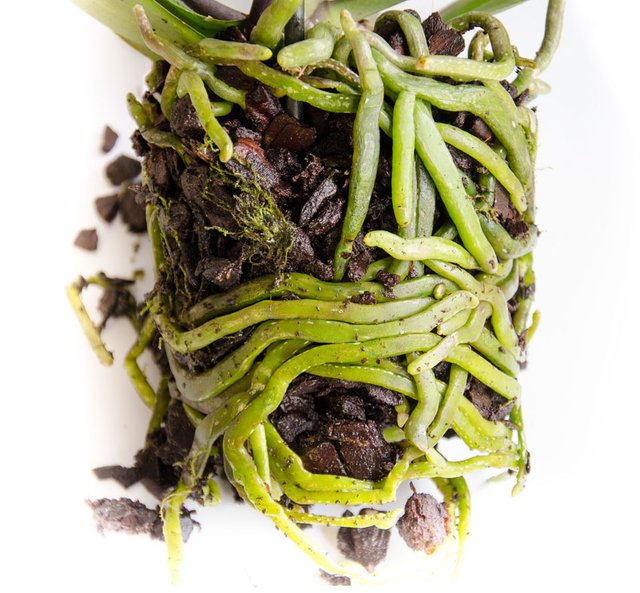
Silver/grey orchid roots
The following image is showing the roots of the moth orchid that need watering. They are not very dehydrated or dry but require to be watered as a part of good watering practice. You will recognize that the orchid needs watering by the silverish/grey color of its roots.
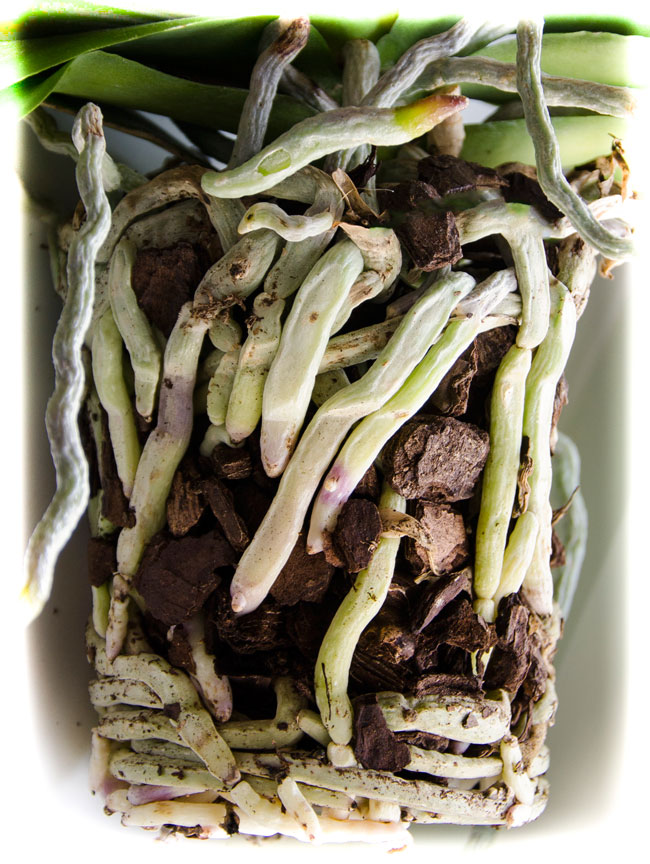
Brown color
If the roots of your orchid are brown it indicates that the orchid is being watered to much or that the roots are standing in water. The only time you want to have the roots of your orchid stand in water is when you water them and not for more than 12 hours. Letting them stand in the water for up to 12 hours during watering will make sure that the substrate gets well humid and will provide the roots of the orchid with humidity the need for normal growth.
But always remember that after they have been standing in the water during watering, that they have to be drained well. Roots that already started rotting and turned brown are not able to absorb water and nutrients which will cause your orchid to die away if not treated immediately. Since overwatering is a big issue with people that grow orchids at home, special attention was put to this part of the post.
The picture below shows the beginning of rotting of the tips of the roots. As you can see they have begun to turn violet/purple . This is your first indicator that your orchids are receiving to much water.
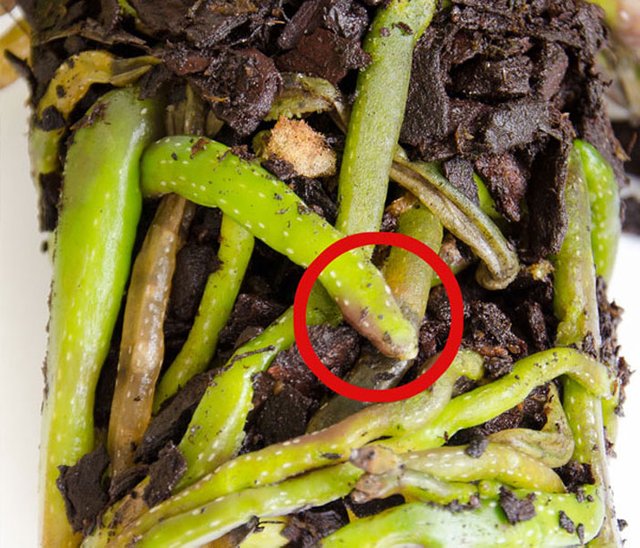
The picture below shows the roots of the orchid that have been standing in the water for 5 days.
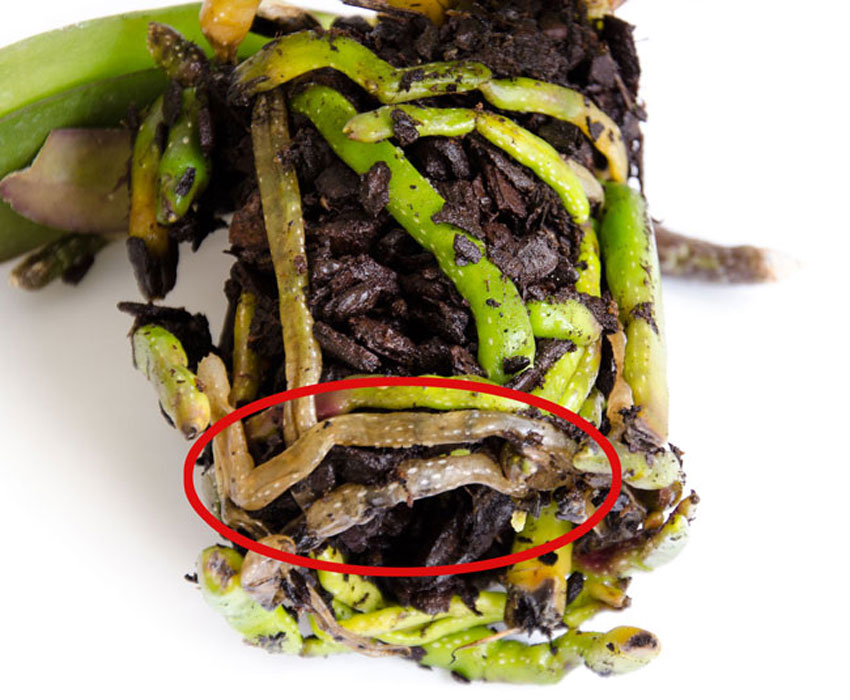
On the picture of the roots above that are marked with red ellipse is clearly visible that the roots started rotting and turning brown. Roots at this phase can still be rescued. If this happens to your orchids cut away the brown roots with a sterile sharp knife and leave the green healthy roots as they are. After that leave your orchids for a few days without water for the substrate will probably still be very moist and the remaining roots will be able to gather the moist they need from this moist substrate. Remember that if the roots have turned brown that means that they are rotten and can not absorb water and nutrients properly and the only thing to do to help your orchid is to cut the brown roots away and leave the healthy ones as they are.
You will be able to recognize if your orchids roots are standing in the water by the color and structure of the aerial roots (roots that are growing outside the pot). The picture below shows the aerial roots of the orchid which has been standing in the water for 8 days.
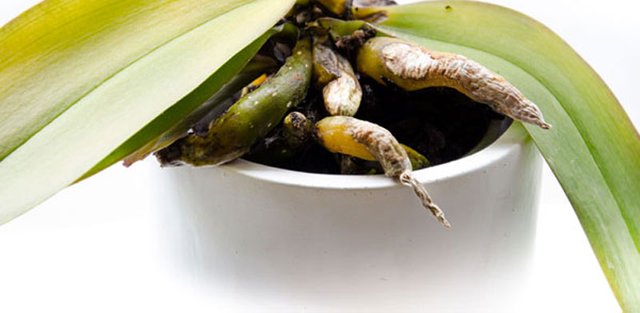
For a better representation of what healthy aerial roots looks like you can find below the picture of just such healthy aerial roots of the orchid.
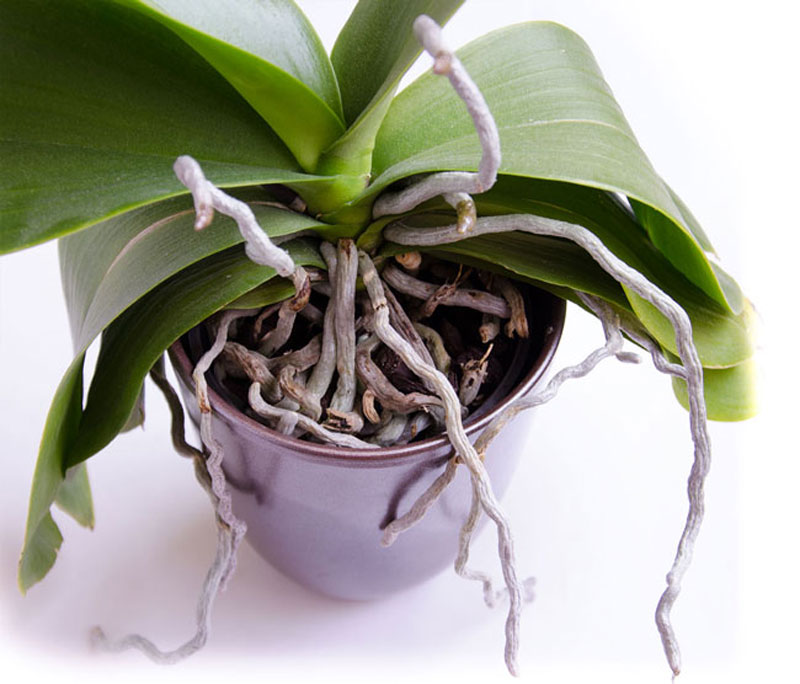
White roots
White and dry roots indicate that orchid has not been watered for a long time and that the roots have started to die away. The white roots are not able to receive any water or nutrients anymore and the only thing to do is to trim them and leave the parts of the roots that are silver/gray or green intact and hope for the best.
When you have cut the dry white roots away you do not want to water your orchid a lot because it may be a shock to it. At this point you should only spray some water on the bark to make sure that the potting material has some moisture from which the orchid will gather its needed moisture. When the edges of the roots that that have been cut away have healed you should continue with with normal watering technique.
For trimming a sterilized cutting tool should be used such as scissors, gardening shears or razor blade. Below is a picture of such white and dry roots.
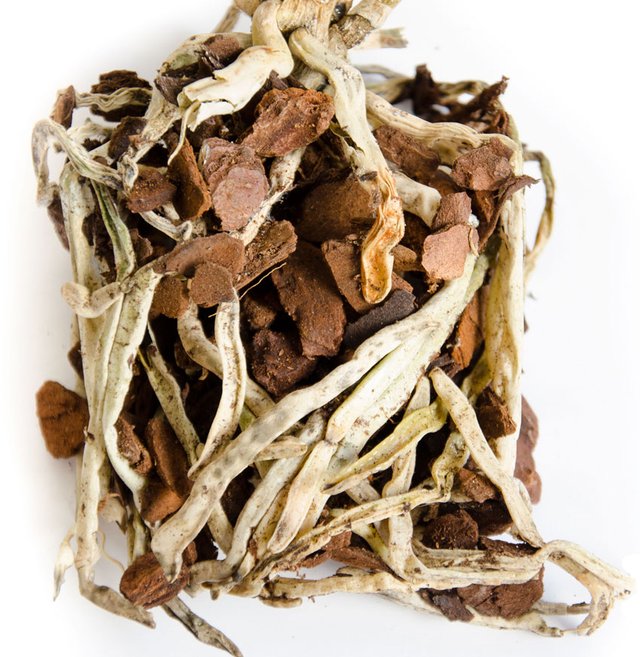
The images and the content are my creation. The images were taken with my Nikon D-7000.
Be sure to check out my recipes which you can find below.
Creamy Boletus Soup With Walnuts
Poached Eggs With Asparagus and Parmesan
Oat Pattie Burger With Leek And Mustard Sauce
I also have orchids. I want to add that when I cut off the roots of the orchid, I sprinkle them with cinnamon powder or charcoal powder (can be activated charcoal). I do not know how you do, but decided to write.
Sounds interesting, never tried that before. I usually just let them recover on their own by making sure the substrate is moist enough so that they have some moisture to gather for their growth. Enjoy your orchids. Thanks friend.